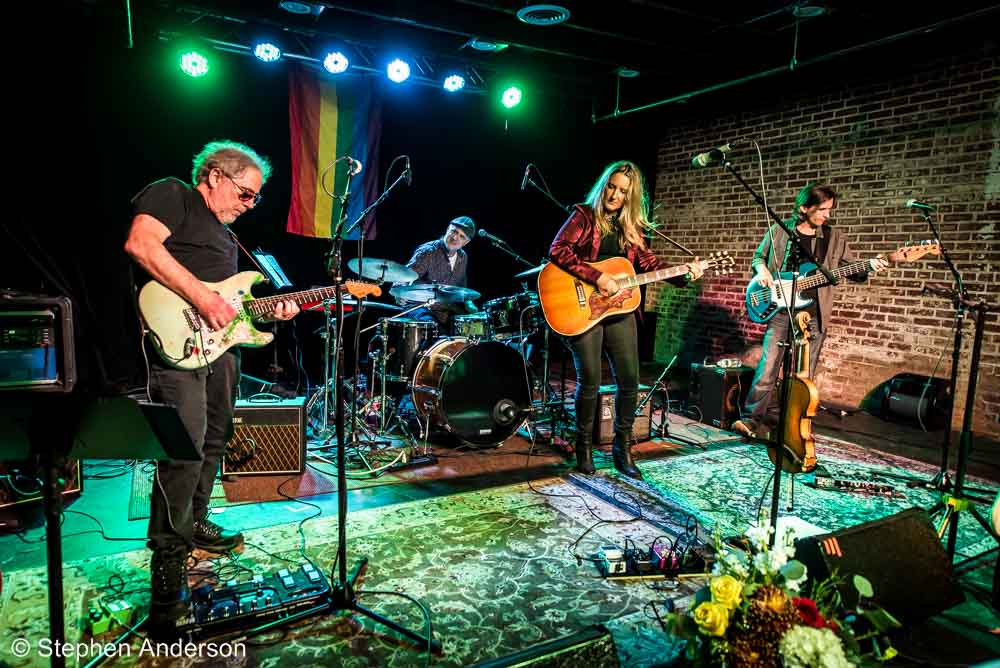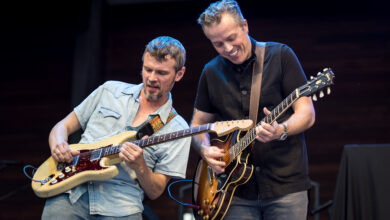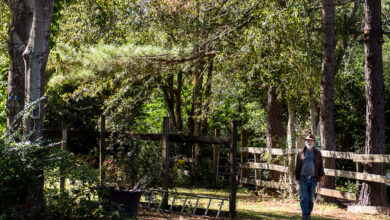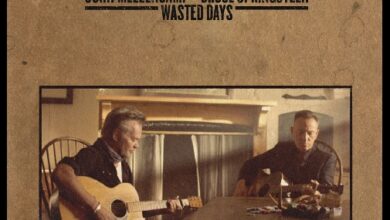Mississippi Blues Trail Series: Harrison County Blues – Biloxi, Gulfport & Pass Christian
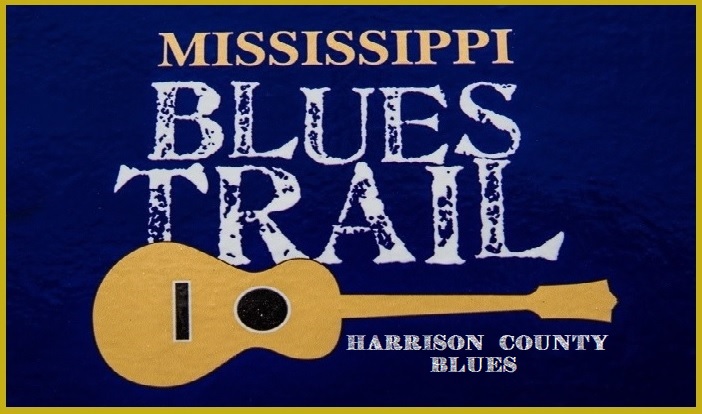
An Article by Johnny Cole
Photos by Stephen Anderson
Traveling along coastal U.S. Highway 90 in Harrison County, Mississippi in 2019, things have noticeably changed through the years. Gone are the many seafood factories, small mom & pop souvenir businesses and motor inns, now replaced with luxurious casinos, high rise hotels, and an ever changing landscape that fills the vacant lots brought about by past hurricanes and changing economics. Despite these changes, the communities, towns and cities of the area strive to keep the remembrance of “days gone by” in high regard. Quite frankly, when driving along the coastline, it’s easy to lose track of where long gone landmarks once resided and served as reminders to help you know exactly where you are.
In the spring of this year, The Southland Music Line began compiling articles and photo collections as part of our Mississippi Blues Trail Series. We have highlighted The 100 Men Hall in Bay St. Louis (MS), the markers commemorating Moss Point Blues, Mississippi Gulf Coast Blues & Heritage Festival (originating in Biloxi, but now calling Pascagoula its home) and the Ocean Springs Blues in our series. Most recently, “The Line” traveled to Natchez, Mississippi and Ferriday, Louisiana for markers detailing the history of the great music coming from those areas.
As of 2019, Harrison County is home to four Mississippi Blues Trail markers highlighting significant points of interest that have helped shape the history of the blues and American roots music.
Biloxi Blues
 The Biloxi marker honors and recognizes the city’s amazing contribution to the blues, jazz and American roots music.
The Biloxi marker honors and recognizes the city’s amazing contribution to the blues, jazz and American roots music.
Biloxi has a checkered history of both good and bad all detailed in books, movies, plays, songs, television shows, and legends passed down through generations of local historians. Its colorful history includes the tales of a blues scene that emerged in the African-American community and prominently existed on a certain stretch of Biloxi’s Main Street and nearby streets north of the railroad tracks.
Biloxi’s long history as a tourist destination dates back to the 1800s. The then-segregated southern city was a popular destination for pleasure seekers as well as maritime workers and armed services personnel. Following World War II, the music scene flourished on both sides of the tracks. While “white only” establishments catered to a growing business clientele, dozens of black venues were also thriving to the sounds of blues, jazz, and rhythm & blues performed by some of the region’s most famous blues and jazz musicians.
The Biloxi marker, located at the corner of Main and Murray Streets, commemorates this era of musicians and venues, and also its rich cultural influence from New Orleans.
Crescent city Jazz great, Jelly Roll Morton, who once called Biloxi his home, was known to frequent the infamous Flat Top Club on Reynoir Street. At the Flat Top, Morton recalled, “…Nothin’ but the blues were played…the real lowdown blues, honky tonk blues”. From the turn of the century through the post WWII years, several other prominent musicians regularly performed in Biloxi, as well as other Gulf Coast cities. Early examples were Bessie Johnson (aka Anita Gonzales) and her brothers Bill, Robert, and Ollie (“Dink”) Johnson (Bill’s Creole Band helped spread the New Orleans sound to audiences across the country); William Tuncel’s Big Four String Band; minstrel show performers Romie and Lamar “Buck” Nelson; and future Chicago blues session drummer, Jimmy Bertrand.
From the 1940’s forward, the tradition continued with several black servicemen who were stationed at Keesler Air Field. Paul Gayten, a blues and R&B recording artist who directed the black USO band during World War II, and future Sun Records recording artist, Billy “The Kid” Emerson, both called Biloxi home at one time in their lives.
Sax Kari, a blues/R&B producer, once operated a Biloxi record store, while Rev. Kenneth Haynes, the brother of future Rock & Roll Hall of Famer, Bo Diddley, was the pastor of a church on Main Street. Local musicians such as Charles Fairley, Cozy Corley, Skin Williams, and bands such as the Kings of Soul, Sounds of Soul, and Carl Gates and the Decks all performed in Biloxi’s amazing blues scene.
By the 1970s, the scene had dwindled and saw little growth until it was recognized by the introduction of the Mississippi Gulf Coast Blues & Heritage Festival (later moved to Pascagoula, MS).
Today, Biloxi is one of the nation’s top casino locales and remains a popular tourist destination. The Biloxi blues marker serves as a reminder of the incredible history, influence and contributions the city made to American music and its proud heritage.
Gulfport Boogie and Broadcasting the Blues
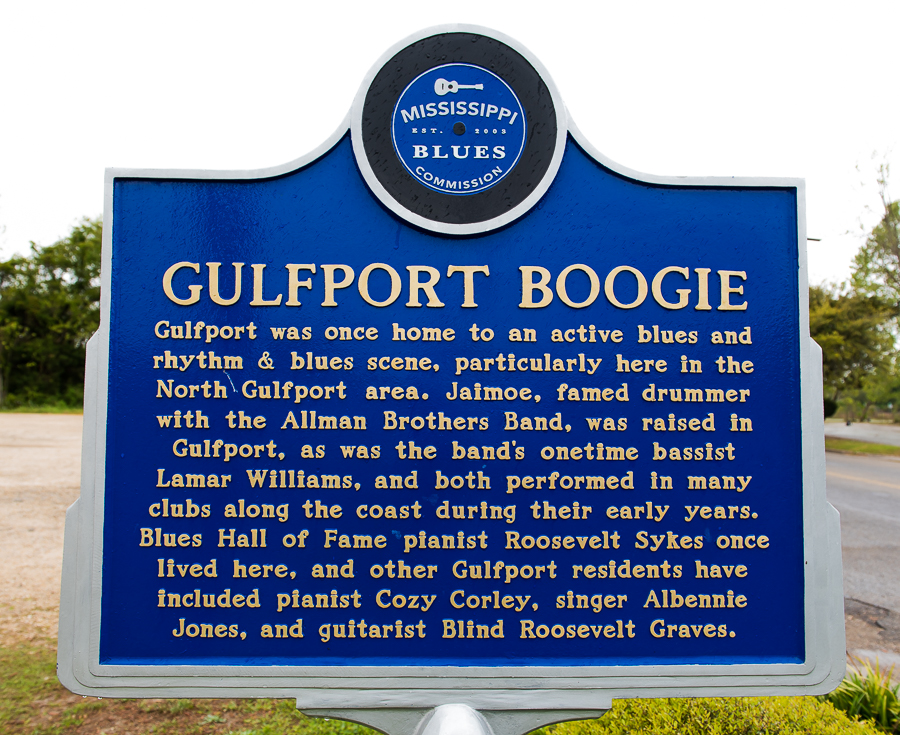 The first of two Gulfport markers honors the city’s historical blues scene, particularly in the North Gulfport area.
The first of two Gulfport markers honors the city’s historical blues scene, particularly in the North Gulfport area.
All along the Mississippi Gulf Coast, the blues, jazz and American roots music have an illustrious history which is no more prevalent anywhere than in Gulfport. Presently, two markers on the Mississippi Blues Trail exist in this coastal city. One honors Gulfport Boogie and the second, shows respect for the history of radio broadcasting devoted primarily to an African-American audience and the advancement of the blues.
As with its neighboring Gulf Coast cities, Gulfport has a long and interesting story regarding the blues and music in general. A few years ago, The Southland Music Line’s photographer, Stephen Anderson, was on hand at the “Gulfport Boogie” marker unveiling in North Gulfport. The marker recognizes many notable musicians and blues clubs of the area.
In the early 1900’s, numerous blues and jazz greats either called Gulfport their home or frequented its thriving music scene. From Jelly Roll Morton’s legendary performances at the Great Southern Hotel and the blues and gambling joints of the area to Ma Rainey’s, “the mother of the blues,” tent shows, Gulfport became synonymous with the genre. Blues greats Lee Collins, Albennie Jones and pianist Little Brother Montgomery all lived in the city for a time. Bluesmen such as Robert Johnson and Big Joe Williams made stops in Gulfport, as did many other blues legends. Blind Roosevelt Graves, who greatly influenced what would become rock & roll, also called Gulfport home during his later years in life. The list of names is staggering: Sollie McElroy of the Flamingos, Jimmy Donley (who would write for Fats Domino), and so on.
 The Gulfport Boogie marker recognizes many of the legendary musicians that contributed to the scene.
The Gulfport Boogie marker recognizes many of the legendary musicians that contributed to the scene.
Gulfport Boogie?…Roosevelt Sykes, composer of “Night Time is the Right Time” and a resident of Gulfport recorded “Gulfport Boogie” as a tribute to “Little Conway’s” (the Beverly Lounge) near the marker’s site at the “Four Corners” intersection of Arkansas Avenue and Martin Luther King Jr. Blvd. The area and community around this location flourished with many other nightspots and blues joints, such as the Owl Club, Elks Club, Ebony, Night Owl and the Throne. The list of local performers is astounding.
The Gulfport Boogie marker also honors and recognizes drummer Johnnie Lee Johnson, better known as Jaimoe, and bassist Lamar Williams, both of whom went on to perform with southern rock greatness, The Allman Brothers Band. Like many other top musicians on the coast, they learned music at 33rd Avenue High School. Carl Gates, a bandleader and school band director, also booked many leading blues and soul acts that regularly performed on the coast’s “chitlin circuit”.
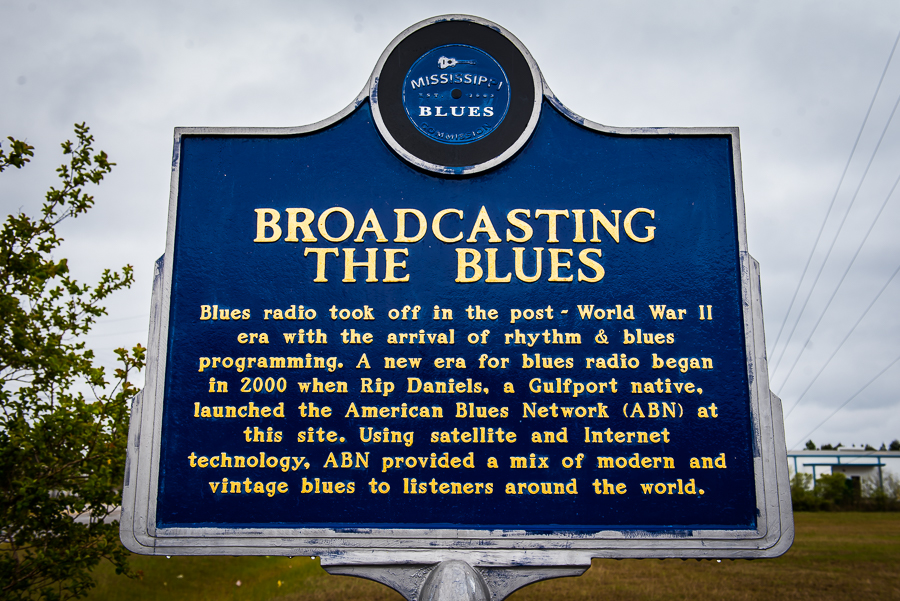 The second Gulfport marker pays tribute and honors blues radio that helped spread this amazing art form to the world.
The second Gulfport marker pays tribute and honors blues radio that helped spread this amazing art form to the world.
The second marker, located on Southpark Drive (just to the south of Seaway Road), honors a select number of radio stations across the South that historically broadcasted black oriented music. The earliest stations to broadcast black music were WQBC in Vicksburg, WGRM in Greenwood, and WJPC in Greenville – (all) famous for their live studio broadcasts. Radio stations such KFFA in Helena (AR), WROX in Clarksdale and WAZF in Yazoo City were among the earliest to broadcast the blues. In 1949, WDIA in Memphis became the first station in the country to broadcast an all-black format. In 1954, the Jackson station, WOKJ, became Mississippi’s first station to do so. The state’s first African-American owned station was WORV in Hattiesburg, which went on the air in the summer of 1969. In 2000, radio personality and avid blues promoter, Stan “Rip” Daniels, launched the American Blues Network, using the internet to provide modern and vintage blues to listeners around the world.
Blues & Jazz in the Pass
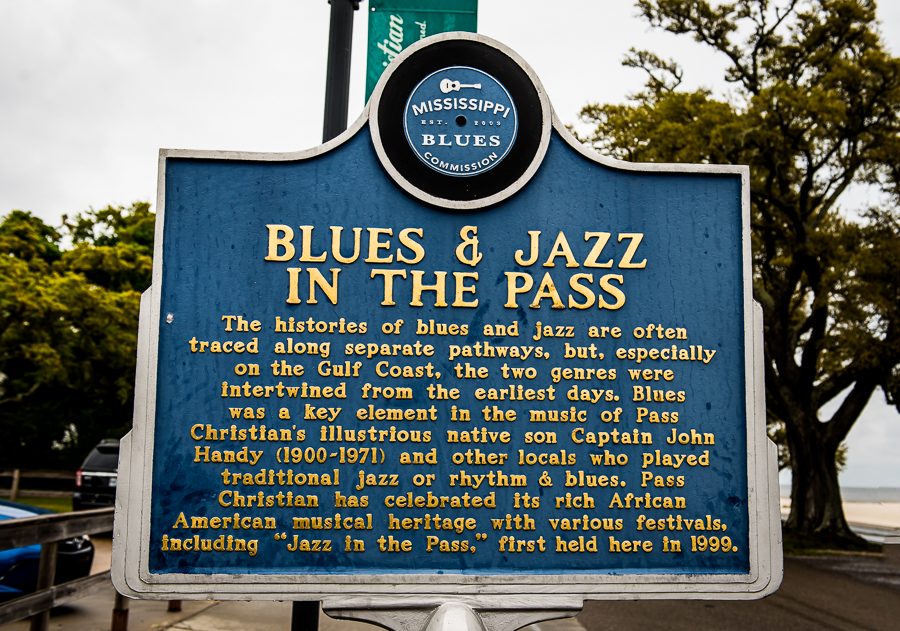 The Pass Christian marker honors the city’s famous music history that beautifully intertwined New Orleans jazz and the Mississippi blues.
The Pass Christian marker honors the city’s famous music history that beautifully intertwined New Orleans jazz and the Mississippi blues.
As one drives a few miles west from Gulfport on Highway 90, they will arrive in the small waterfront city of Pass Christian. The city, which has rebounded from destructive hurricanes and changes in both economic and political climates, has one of the Mississippi Gulf Coast’s most distinguished and cherished histories. Pass Christian was a famous resort prior to the American Civil War and became a favorite location for wealthy New Orleans families who built stately, beautiful mansions along the picturesque shoreline. Even today, the historic Scenic Drive is a reminder of the city’s antebellum past. Before moving to New Orleans in 1857, The Southern Yacht Club in Pass Christian became one of the first yacht clubs established in the United States in 1849 – along with Mobile (AL), Biloxi (MS), Newport (RI), and Detroit (MI). The sailing regattas along the Gulf Coast are now considered legendary.
The Mississippi Blues Trail honors the famous Pass Christian music history that beautifully intertwined New Orleans jazz and the Mississippi blues. You cannot discuss the music of Pass Christian without mentioning Captain John Handy. The Pass Christian born Handy was an American jazz alto saxophonist rooted in New Orleans jazz with elements of R&B. Handy received widespread acclaim for his work with many other jazz greats up until the time of his passing. He began performing at an early age along with his father and brothers and entertained at beachfront resort hotels of the Gulf Coast – a common practice of many musicians traveling to and from New Orleans. Several family acts played the venues in “The Pass”, such as The Watson Brothers, and Anita Jackson and her brother, Joseph “Joe B.” Jackson, Jr., who also led his own group, “Jobie Jackson’s Band”.
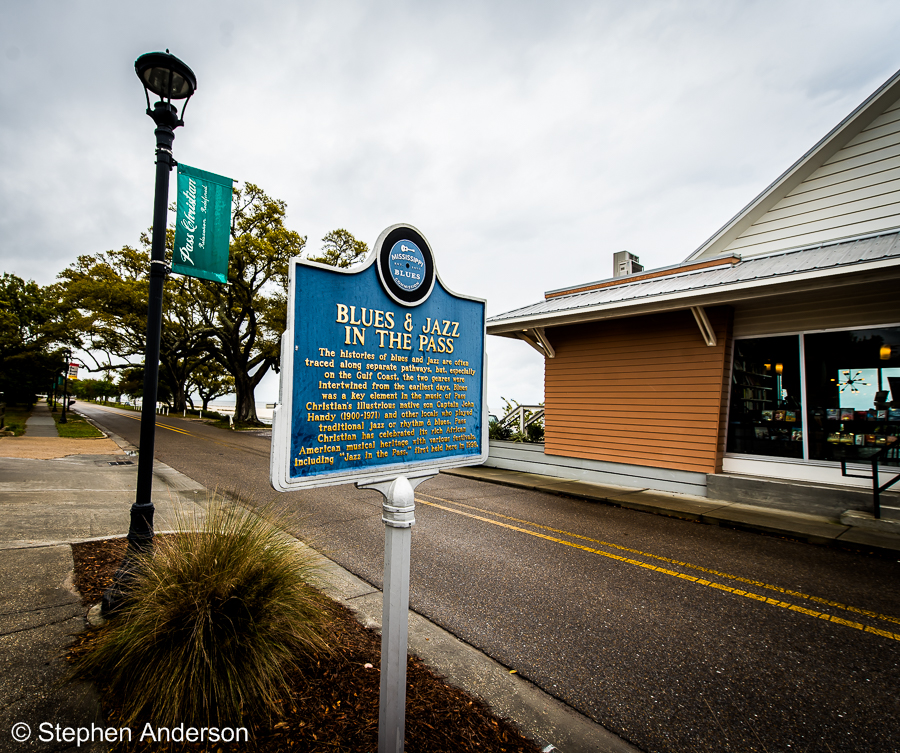 The Pass Christian marker sits directly across from the beautiful Mississippi Sound.
The Pass Christian marker sits directly across from the beautiful Mississippi Sound.
In the 1950’s, the highly popular blues, R&B, and rock & roll band, The Claudetts, were well known across the region. After moving to Chicago, the Claudetts’ Sonny Wimberley, a singer and bassist, went on to perform with the Muddy Waters blues band and his own band, the Sunglows. Also from the Claudetts, saxophonist Donald “Cadillac” Henry later worked in promotion and management for such artists as Otis Redding and Z.Z. Hill.
As with several of the cities, towns or sites honored with a Blues Trail marker, the local clubs must be given their much deserved honor. Among those in Pass Christian to feature blues, jazz, and R&B were the Dixie, the Savoy, and P.C. Club, the site of Capt. John Handy’s final jam performance.
The city of Pass Christian holds its music roots in high regard by regularly holding a variety of music events including the annual “Jazz in the Pass” at War Memorial Park. The Pass Christian marker is located on East Scenic Drive (just to the east of Davis Ave.) overlooking the beautiful waters of the Mississippi Sound.
Our journey visiting the many Mississippi Blues Trail markers has just begun. We are looking forward to visiting the many markers that are recognized around the state and abroad.
 (Click Above for Two Pages of Photos)
(Click Above for Two Pages of Photos)
.
Related Articles
* Mississippi Blues Trail Series: 100 Men D.B.A. Hall – Bay St. Louis by Brenda Germany
* Mississippi Blues Trail Series: Jackson County Blues – Moss Point, Pascagoula & Ocean Springs by Johnny Cole
Page Designed & Edited by Johnny Cole
© The Southland Music Line. 2019. All rights reserved


